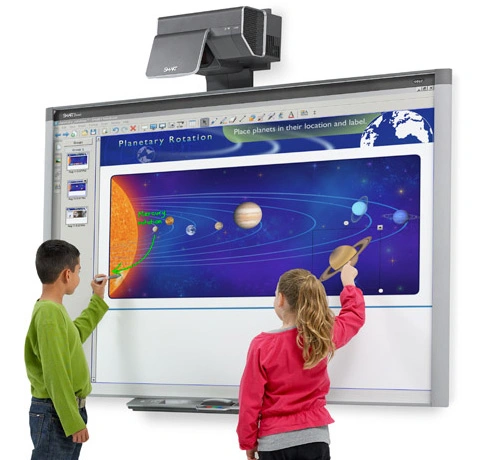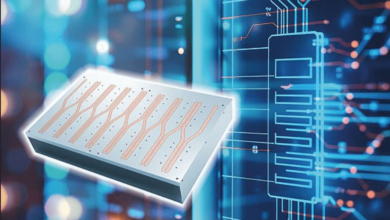The Impact and Evolution of Interactive Smart Boards

Introduction
In the digital age, the integration of technology into various sectors has revolutionized traditional practices. One notable advancement is the interactive smart board, a tool that has transformed educational and professional environments. These devices blend digital interactivity with traditional board functionalities, offering a dynamic platform for teaching, presentations, and collaborative work. This article delves into the evolution, features, applications, benefits, and future trends of interactive smart boards, highlighting their significant impact across different sectors.
The Evolution of Interactive Smart Boards
Interactive smart board have undergone significant evolution since their inception. Initially designed to replace traditional whiteboards, they now encompass a range of advanced technologies and functionalities. Here’s a brief look at their evolution:
Early Beginnings: The concept of interactive boards emerged in the late 20th century with the development of early interactive whiteboards (IWBs). These initial models provided basic touch functionality and were primarily used in educational settings.
Technological Advancements: As technology progressed, interactive boards evolved to include touch-sensitive surfaces, enhanced resolution, and digital integration. The advent of capacitive and optical touch technologies improved the precision and responsiveness of these boards.
Integration with Digital Tools: In the 2000s, interactive smart boards began to integrate with digital tools and software, enabling more sophisticated features such as multimedia support, real-time collaboration, and cloud connectivity.
Modern Smart Boards: Today’s interactive smart boards offer high-definition displays, multi-touch capabilities, and advanced connectivity options. They are equipped with intuitive interfaces, interactive software, and integration with various digital platforms, making them versatile tools for a range of applications.
Key Features of Interactive Smart Boards
Interactive smart boards come with a suite of features designed to enhance user experience and functionality. Understanding these features helps in leveraging their full potential:
Touchscreen Interface: At the core of interactive smart boards is their touchscreen interface. This allows users to interact with the board using touch gestures, making it easy to navigate, draw, and manipulate content directly on the screen.
Multi-Touch Functionality: Modern smart boards support multi-touch functionality, enabling multiple users to interact with the board simultaneously. This is particularly useful for collaborative activities where several individuals need to work on the board at the same time.
High-Resolution Display: Interactive smart boards are equipped with high-resolution displays that ensure clear and vibrant visuals. This is crucial for displaying detailed information, multimedia content, and interactive elements effectively.
Interactive Software: Interactive smart boards are often paired with specialized software that enhances their functionality. This software may include tools for creating presentations, annotating content, and facilitating interactive lessons or meetings.
Connectivity Options: Smart boards offer various connectivity options, including HDMI, USB, Bluetooth, and wireless connections. This allows users to connect different devices and integrate the smart board with other office or educational technology.
Cloud Integration: Many interactive smart boards support cloud integration, enabling users to access and save files from cloud storage services. This feature facilitates easy sharing, collaboration, and access to resources.
Recording and Playback: Interactive smart boards often include features for recording sessions and presentations. This allows users to capture discussions and interactions for later review or sharing with others who could not attend.
Customizable Features: Users can often customize the interactive smart board interface and functionality to suit their specific needs. This includes configuring settings, adding custom tools, and integrating with existing software systems.
Applications of Interactive Smart Boards
Interactive smart boards have a wide range of applications across various sectors. Their versatility makes them valuable tools in multiple contexts:
Education: In educational settings, interactive smart boards enhance teaching and learning experiences. Teachers can present lessons, conduct interactive activities, and engage students in real-time. The ability to display multimedia content, annotate materials, and facilitate group work makes learning more interactive and effective.
Corporate Meetings: Interactive smart boards are widely used in corporate environments for meetings and presentations. They allow presenters to display slides, annotate documents, and collaborate with team members in real-time. The interactive nature of the board keeps participants engaged and facilitates better communication.
Training and Development: In training and development programs, interactive smart boards are used to deliver interactive training sessions. Trainers can use the board to present information, conduct exercises, and provide feedback. The ability to record sessions also supports ongoing learning and reinforcement.
Project Management: Interactive smart boards are effective tools for project management. They can display project timelines, track progress, and manage tasks. The interactive features allow teams to collaborate on project plans and make adjustments in real-time.
Client Presentations: When engaging with clients, interactive smart boards enhance presentations by providing a dynamic platform for showcasing ideas and solutions. The ability to interact with content and gather client feedback in real-time improves the overall presentation experience.
Remote Collaboration: With the rise of remote work, interactive smart boards facilitate virtual collaboration. They enable remote participants to join meetings, interact with content, and contribute to discussions, bridging the gap between in-person and virtual interactions.
Data Visualization: Interactive smart boards are useful for visualizing complex data and analytics. They allow users to display charts, graphs, and other visual representations of data, making it easier to analyze and interpret information.
Advantages of Interactive Smart Boards
The adoption of interactive smart boards brings numerous advantages that can significantly enhance productivity and engagement. Here are some key benefits:
Enhanced Engagement: Interactive smart boards make presentations and meetings more engaging by allowing users to interact with content directly. This increased engagement leads to better communication and information retention.
Improved Collaboration: The ability for multiple users to interact with the board simultaneously fosters collaboration and teamwork. This is particularly beneficial for group activities and brainstorming sessions.
Real-Time Interaction: Interactive smart boards allow for real-time interaction with content, enabling users to make instant changes, annotations, and updates. This immediacy improves the effectiveness of discussions and presentations.
Efficient Communication: Smart boards provide a central platform for sharing information, reducing the need for multiple tools and ensuring that all participants have access to the same content.
Increased Productivity: By streamlining various tasks such as project management, data visualization, and training, interactive smart boards enhance overall productivity. The integration with other software systems also improves efficiency.
Flexibility: Interactive smart boards are versatile tools that can be adapted for different applications. Whether it’s a classroom, a meeting room, or a training session, smart boards can be customized to suit specific needs.
Accessibility: With cloud integration and connectivity options, interactive smart boards make it easy to access and share files from various devices. This ensures that team members can collaborate effectively, regardless of their location.
Implementing Interactive Smart Boards
To successfully implement interactive smart boards in an office or educational setting, several key steps should be followed:
Assess Needs and Goals: Evaluate the specific needs and goals of your organization or institution. Consider factors such as the types of activities conducted, the level of interactivity required, and the size of the space where the smart board will be used.
Select the Right Model: Choose an interactive smart board model that aligns with your requirements. Consider factors such as screen size, resolution, touch sensitivity, connectivity options, and compatibility with existing software.
Provide Training: Ensure that users are trained on how to effectively use the interactive smart board. Offer training sessions and resources to familiarize employees or students with the features and functionality of the device.
Integrate with Existing Systems: Make sure the interactive smart board integrates seamlessly with your existing technology and software systems. This may involve configuring settings, installing software, and connecting the board to other devices.
Promote Adoption: Encourage the use of the interactive smart board by demonstrating its benefits and providing support. Highlight successful use cases and share best practices to foster adoption and integration into daily activities.
Monitor and Evaluate: Regularly monitor the use of the interactive smart board and evaluate its impact on productivity and engagement. Gather feedback from users and make any necessary adjustments to optimize its effectiveness.
Challenges and Considerations
While interactive smart boards offer many benefits, there are also challenges and considerations to keep in mind:
Cost: The initial investment in interactive smart boards can be substantial. Consider the long-term benefits and return on investment when evaluating the cost of purchasing and maintaining the devices.
Technical Issues: Smart boards can experience technical issues such as connectivity problems or software glitches. Ensure that you have access to technical support and maintenance services to address any issues promptly.
Training Requirements: Effective use of interactive smart boards requires training for users. Invest in training programs to ensure that individuals can fully leverage the features and capabilities of the device.
Compatibility: Ensure that the smart board is compatible with your existing technology and software. Compatibility issues can affect the functionality of the device and may require additional adjustments.
Over-Reliance: There is a risk of becoming over-reliant on interactive smart boards. While they offer many advantages, it’s important to balance their use with other communication and collaboration methods.
Future Trends in Interactive Smart Boards
The future of interactive smart boards is likely to be shaped by ongoing advancements in technology. Here are some trends and developments to watch for:
AI Integration: Artificial intelligence may enhance the functionality of interactive smart boards by providing features such as automated content creation, intelligent feedback, and personalized recommendations.
Advanced Touch Technology: Future smart boards will likely feature even more advanced touch technology, offering improved sensitivity and responsiveness for a more intuitive user experience.
Enhanced Connectivity: Smart boards are expected to offer improved connectivity options, including more advanced wireless technologies and seamless integration with other smart devices.
Portable Solutions: The development of portable and flexible smart board solutions may make it easier to move and adapt the device to different environments.
Greater Customization: Future smart boards are likely to offer increased customization options, allowing users to tailor the device to their specific needs and preferences.
Interactive Collaboration Tools: The development of more sophisticated collaboration tools will further enhance the ability of smart boards to facilitate teamwork and interactive discussions.
Conclusion
Interactive smart boards have revolutionized the way we teach, present, and collaborate. Their advanced features, versatility, and ability to enhance engagement make them invaluable tools in both educational and professional settings. As technology continues to evolve, interactive smart boards will offer even more capabilities and benefits, shaping the future of communication and collaboration. Understanding their features, applications, and future potential provides insight into their role in transforming various sectors. By leveraging this technology, organizations and institutions can foster a more interactive, efficient, and engaging environment.



